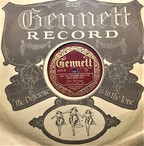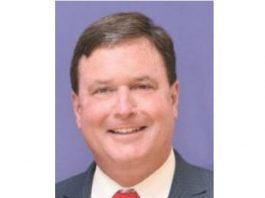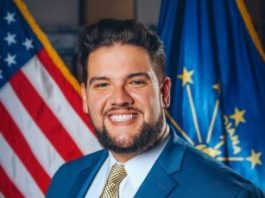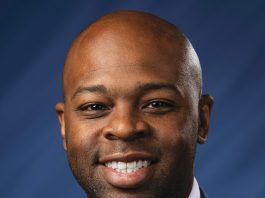June 27 – July 3The Week in Indiana History |
|||||||||||||||
“There is no royal flower-strewn path to success. And if there is, I have not found it, for whatever success I have attained has been the result of much hard work and many sleepless nights.” – – – Madam C. J. Walker (1867 – 1919) Madam C. J. Walker’s cosmetics business in Indianapolis made her the first self-made woman millionaire in America.
Did You Know?   The Gennett Recording Studio was established in Richmond, Indiana, by the Starr Piano Company. The first records were released in 1917. The studio was near a railroad track and sometimes a recording session was ruined by a passing train. For soundproofing, a mohawk rug was placed on the floor and drapes and towels were hung on the walls. Many young jazz artists, ignored by other record companies, were welcomed at Gennett. That was where many big names got their start, including Louis Armstrong, Hoagy Carmichael, Jelly Roll Morton, Bix Beiderbecke, Earl Hines, and Duke Ellington.  In addition, the studio was available to performers of other musical styles including blues, country, and gospel. The company faltered during the Great Depression, but it is revered today for its role in capturing for posterity the broad landscape of American music in the early 20th Century. Take an “Armchair Tour” of the Indiana Statehouse ANSWERS:  Evan Bayh, Edgar Whitcomb, Joe Kernan, Robert Orr
|
|||||||||||||||



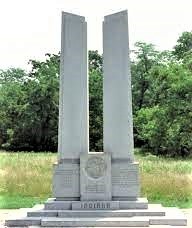 1863   The Civil War Battle at Gettysburg ended with a Union victory. Approximately 2,200 Indiana men were engaged from the 3rd Cavalry and 7th, 14th, 19th, 20th, and 27th Infantry Regiments. The 19th was part of the famous “Iron Brigade.” Over one-quarter of the Hoosier soldiers at Gettysburg were killed or wounded. Pictured: The Indiana monument on the Gettysburg battlefield. Â
1863   The Civil War Battle at Gettysburg ended with a Union victory. Approximately 2,200 Indiana men were engaged from the 3rd Cavalry and 7th, 14th, 19th, 20th, and 27th Infantry Regiments. The 19th was part of the famous “Iron Brigade.” Over one-quarter of the Hoosier soldiers at Gettysburg were killed or wounded. Pictured: The Indiana monument on the Gettysburg battlefield.   1886   The Western Association of Writers met at Plymouth Church in Indianapolis. Many Indiana authors were in attendance, including Maurice Thompson, who was elected the group’s first president. Over the years, the organization included James Whitcomb Riley, Sarah Bolton, Meredith Nicholson, Booth Tarkington, Mary H. Catherwood and others who were part of the “Golden Age of Indiana Literature.”
1886   The Western Association of Writers met at Plymouth Church in Indianapolis. Many Indiana authors were in attendance, including Maurice Thompson, who was elected the group’s first president. Over the years, the organization included James Whitcomb Riley, Sarah Bolton, Meredith Nicholson, Booth Tarkington, Mary H. Catherwood and others who were part of the “Golden Age of Indiana Literature.”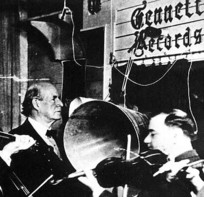 1923   Famed orator William Jennings Bryan came to the Gennett Record Company in Richmond, Indiana. He recorded excerpts of his famous “Cross of Gold” speech. The Richmond studio is a legendary part of jazz history. For more, see “Did You Know?” in the right column.
1923   Famed orator William Jennings Bryan came to the Gennett Record Company in Richmond, Indiana. He recorded excerpts of his famous “Cross of Gold” speech. The Richmond studio is a legendary part of jazz history. For more, see “Did You Know?” in the right column. 1940   The popular Glenn Miller Band played one-night only at the Ideal Beach Ballroom at Shafer Lake in Monticello. The band, rated number-one by Billboard Magazine, dominated record sales and plays on radio and jukeboxes. Their recording of “In the Mood” was at the top of the hit parade for 1940.
1940   The popular Glenn Miller Band played one-night only at the Ideal Beach Ballroom at Shafer Lake in Monticello. The band, rated number-one by Billboard Magazine, dominated record sales and plays on radio and jukeboxes. Their recording of “In the Mood” was at the top of the hit parade for 1940. 1943   Zilthia Mae Jimison was born in Indianapolis. She attended law school and became the first African American woman to serve on the Marion County Superior Court. She was on the Indianapolis city council and, in 1995, was a candidate for mayor. She established the drug treatment court and was active in many civic organizations.
1943   Zilthia Mae Jimison was born in Indianapolis. She attended law school and became the first African American woman to serve on the Marion County Superior Court. She was on the Indianapolis city council and, in 1995, was a candidate for mayor. She established the drug treatment court and was active in many civic organizations.

